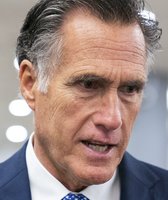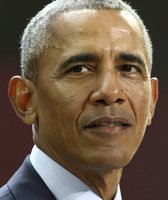Get PolitiFact in your inbox.

On the Obameter, 45 percent of the education promises have been rated Kept.
Last time Barack Obama ran for president, he campaigned on an ambitious plan for education reform.
High school graduation rates? He’d increase them. The dropout crisis? He’d pay for more prevention programs. And public charter schools? He’d double their federal funding.
Obama was especially focused on pre-kindergarten students. He swore to expand the federal early learning programs Head Start and Early Head Start; create a presidential early learning council; and launch a "Children’s First Agenda."
Education was a favorite talking point for candidate Obama. Only health care, foreign policy and energy rank higher in sheer number in our Obameter database, and he’s fared well on his 31 education promises.
Here’s a tally of his performance so far:
Obama addressed many of his education goals with a competitive grant program called Race to the Top. The program began as a part of the American Recovery and Reinvestment Act, better known as the economic stimulus. Congress has since set aside money for extensions of the program in 2011 and 2012. That alone amounts to slightly more than $5 billion for K-12 education reform under the Obama administration.
Race to the Top leverages the incentive of grant money to compel states to make policy changes. One example: States stand a better chance of receiving grants if they remove barriers to the creation of public charter schools.
This year the Education Department is taking the same approach and applying it directly to school districts, with grants scheduled to be awarded in December 2012.
About a third of Obama’s education promises haven’t earned a final rating. In some cases that’s because the nature of the American public education system is fragmented, with distinct approaches between states and school districts. Current and accurate statistics -- measured in the same way across the country -- aren’t always unavailable. We saw this when we tried to rate Obama’s success at getting more high school students to take college-level courses, something we don’t count nationwide. We saw similar problems in tracking the nation’s high school graduation and dropout rates.
Because the measures lag by several years -- when they exist at all -- the consequences of Obama’s reforms may take time to materialize. The Obameter does tell us he kept many of his promises, even if we won’t know their effects until after 2012.
Our Sources
PolitiFact, Early learning programs grew, but not to promised size, Sept. 27, 2012
PolitiFact, No agenda but some progress, Sept. 27, 2012
PolitiFact, The number is probably on the rise, but we don't have an accurate count, Sept. 25, 2012
PolitiFact, Obama's support of charter schools falls short of campaign promise, Sept. 25, 2012
PolitiFact, Obama funded middle school dropout prevention, Sept. 20, 2012
PolitiFact, President's early learning council exists as an interagency board, Sept. 20, 2012
PolitiFact, Improve high school graduation rates: Lack of good data makes it impossible to know yet, Aug. 31, 2012























